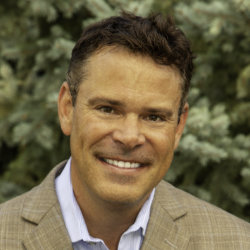 Linda Peterson was stunned when she received the renewal notice for her homeowner's insurance policy a few weeks back.
Linda Peterson was stunned when she received the renewal notice for her homeowner's insurance policy a few weeks back.
The annual premium was rising from $1,370.74 a year to $1,981.99, a much larger jump than she had expected even with the calamities she witnessed in her own backyard of Colorado Springs."We have lived here 20 years, and it is the biggest increase we have received," she said.The dismay Peterson experienced is expected to become much more common in the months ahead as insurers in Colorado try to bring premiums into line with claims.It's not the summer's destructive wildfires that are to blame — those will likely spur more localized increases in a few years — but storms and catastrophes from 2008 to 2010."Insurance premiums are based on patterns and trends over a long time," said Carole Walker, executive director of the Rocky Mountain Insurance Information Association, an industry trade group. "It is a multiyear process."Some consumers along the Front Range will get double-digit percentage increases as their renewals come up this year and next, Walker said.The Windsor tornado in 2008 was the most costly in state history, at $193.5 million in insured losses. Three hailstorms in 2009 generated $1.4 billion in damages, making that year the costliest in Colorado ever for insurers.Insurers note that a severe hailstorm lasting minutes can generate much larger claims overall than a forest fire burning for days.In 2009, insurers in the state paid out $1.68 in claims for every $1 they collected in premiums. In 2010, it was $1.37 in claims for every $1 in premiums, the fourth-worst showing of any state in the country, according to the Property Casualty Insurers Association of America. For the previous three years, however, insurers paid less than they collected in Colorado.Some consumers may want to say tough luck, that the insurers didn't forecast properly. But regulators take a different approach, said Marianne Goodland, director of consumer education at the Colorado Division of Insurance.If claims continue to outpace premiums for a sustained period, then insurers will eventually deplete their reserves and not have the money needed to pay out claims."You want your insurance company to be able to pay your claims. You want them to be financially solvent," Goodland said.That doesn't make big premium increases much easier to accept.Marcus Rose recently saw the premium on his Castle Rock home jump from around $660 to $1,000, a rise beyond what he considered reasonable."I called them, and the only explanation they would give me is that they had an unusually high amount of losses in Douglas County and they had to recoup those losses," Rose said.Getting straight answers from insurers can be difficult, he said.Since moving to Colorado from Las Vegas five years ago, he hasn't filed a claim on his homeowner's policy, despite a bad hailstorm that his tile roof withstood. Yet his rates have jumped by more than half."People like me who don't have any claims have to pay for the people who do," he said.Insurers file rate requests each year with the Colorado Division of Insurance that regulate what they can charge customers in premiums.Some haven't requested an increase since 2010, while others such as Farmers Insurance have filed multiple requests for rate hikes this year, including one last month that could hit some customers with a maximum 51.8 percent increase.State Farm Fire and Casualty, the state's largest provider covering about a quarter of homes in the state, filed a request April 15 to increase its homeowner's rates an average of 8 percent.Within that average are some homeowners who will get whacked with a 39 percent increase and others who will enjoy a 19 percent decrease."As claims continue to rise, we have to adjust rates for anticipated claims in the future," said State Farm spokeswoman Angela Thorpe.The math to lower premiums will require Colorado getting a break from a string of natural disasters plus consumers doing more to mitigate damage, she said."We could all enjoy lower rates if we had fewer claims," she said.Rose and Peterson said they shoppedaround to find a lower premium but decided to stay put after failing to find a better deal.Peterson brought her premium down to $1,752.85 by raising her deductible from $1,000 to $2,500."The agents all told us rates were going up," Peterson said. "We are just the first wave."Aldo Svaldi: 303-954-1410, asvaldi@denverpost.com or twitter.com/aldosvaldiWho to callThe Colorado Division of Insurance fields questions on a variety of insurance-related topics and also handles complaints from consumers who feel their insurance providers are treating them unfairly."We have a whole team of people who do nothing but talk to homeowners and consumers about their insurance issues. If they feel their rate increase hasn't been justified, they should call us," division official Marianne Goodland said.The help line is available during business hours at 303-894-7490.Read more: Colorado homeowners can expect to see rising home insurance rates - The Denver Post http://www.denverpost.com/business/ci_21711680/colorado-homeowners-can-expect-see-rising-home-insurance?source=email#ixzz29lixRuufRead The Denver Post's Terms of Use of its content: http://www.denverpost.com/termsofuse
 By
By